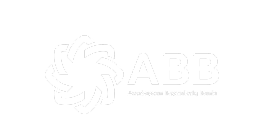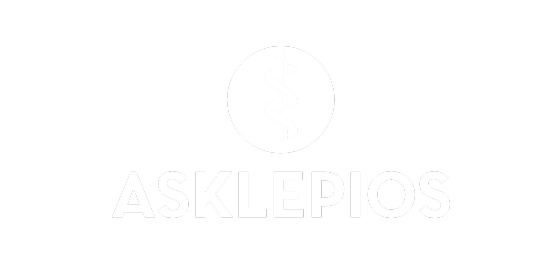
Client:Travelport
Industry:Travel & Hospitality
Region:Europe
Travelport maximizes compliance and employee engagement with automation

Client Overview
Travelport is on a mission to simplify the travel industry. The sector is a notoriously complex web of airlines, hotels, car rental companies, and agents. They all need to align to ensure travelers get what they want when they need it. Travelport focuses all its energy and expertise on connecting buyers and sellers of travel through a single, independent marketplace.
Travelport rebranded in 2001, consolidating several global distribution companies including Galileo and Worldspan. Since then, it’s continued to build a multi billion-dollar business and develop innovative solutions to bring all parts of the travel industry together. It offers travel agents real-time information about available hotel rooms, flight seats, and cars, creating a well-oiled machine to match buyers with sellers.
The company’s created a first-class array of systems, processes, and people to power its operations. While this is something to be proud of, it can be a double-edged sword, with many plates to spin and lots of legacy systems to manage and maintain.
With this challenge in mind, Angela Lewis-Hudson, senior director for finance transformation at Travelport, wanted to address these concerns with automation. “We started our journey about five years ago, creating a centre of excellence to lead the way,” she says.
We faced three key issues. There were no standard global processes, with each country running things their own way. We had a complex web of legacy technology, and our data flows were not as efficient as they could be. Finally, as a result, there was ‘swivel chair’ integration where people moved data manually from one place to another.
Angela Lewis-Hudson • Senior Director for Finance Transformation at Travelport
This trio of challenges led to the growth of the finance team to compensate. It was 30 percent larger than it should have been. “We spoke to a consultancy who compared us to the industry,” Lewis-Hudson explains. “The manual processes we had meant there were lots of people doing low value tasks.”
The automation plan aimed to get it in line with the sector. “We needed to reduce manual activities, focus the team on valuable work and create streamlined, global processes.” The scene was set for a large-scale, end-to-end implementation in the accounts payable team, handling 2,000 payments to customers and vendors each week.
Pivoting to a different approach and assuring compliance
As automation began to roll out, the center of excellence (CoE) led by Lewis Hudson noticed something was amiss. “We got quite a lot of resistance from the team,” she confides. “There were reservations. People worried the automation would not provide the accuracy needed to meet complicated and compliant-heavy rules.” The manual processes she was aiming to replace often involved checking and verifying data. With these taken over by software, people felt open to risk.
We quickly changed approach, implementing smaller automations, which were quicker to deliver and could show value to employees. This allowed us to gain buy-in.
Angela Lewis-Hudson • Senior Director for Finance Transformation at Travelport
It also allowed the CoE to prove that the automations were highly accurate and could maximize compliance without manual checks.
The next step was to harness the enthusiasm and combine automation with outsourcing. “We outsourced some work from the finance team and allowed those in-house to focus on compliance and monitoring.” This gave the department the confidence that rules were being met while also removing the manual tasks to which they’d once been so close.
“They were happy and could see ‘know-your-customer’ checks and sanction lists were being adhered to. They could also see that the new way of working gave customers the same level of service they needed.”
Shifting up a gear
This success gained attention from the corporate systems team at Travelport. “They could see the positive outcomes and wanted to get involved,” she says confidently. This was a crucial step because it allowed automation to enter multiple systems, integrating across the business rather than in individual departments.
From this point, the lessons learned in the finance department allowed the CoE to deploy solutions in HR and even customer engagement. They did it in a structured way, which continued to have compliance and accuracy at its heart.
With automation now taking hold enterprise-wide, Lewis-Hudson and the team made the shift from thinking about ‘bots’ to considering wider issues. “Our mindset changed about what automation could do,” she enthuses. She worked with UiPath to consider bigger opportunities.
For example, she had previously thought there was a natural limit on the volume of data that automation could manage. “We found ways to undertake much larger data projects.” This included managing the ‘closing period’ at the end of each month, when the finance team reviews information, reconciles it, and reports results. “This allowed us to close far more quickly as we could move the data around faster. It’s efficient and controlled.”
By this point, automation was firmly embedded in the business.
People were no longer thinking about what tasks needed to be done, but how they could do them more effectively. They ask, ‘can we automate?’ This is a big shift. It’s become part of our DNA.
Angela Lewis-Hudson • Senior Director for Finance Transformation at Travelport
Engaging employees
While at first there was resistance to automation, it’s now become a strategic asset. Not just boosting compliance, but improving employee engagement too—especially with newer recruits. “When we interview people for finance roles, being able to say we have strong automation is a big win,” Lewis-Hudson points out. “We can attract better applicants, especially at the entry graduate levels.”
And once those employees are in post, the technology enthuses them. “As part of the onboarding process, we give them access to the software so they can build their own automations. This means they’re on-board with the idea from the first day. They can make a positive difference to their own working lives.”
While Angela Lewis-Hudson admits this wasn’t something she set out to achieve, she believes that getting automation into the hands of employees early has made an enormous impact. “It creates a workforce that’s solution-focussed; that can solve their own issues.” This is hugely empowering.
Highlighting success
With a remarkable story to tell, Lewis-Hudson is keen to ensure the business hears all about it. She reports on the overall return on investment from automation and monitors and measures employee engagement. The leadership always receives this well and it helps build momentum across the business.
So much so, that people outside the CoE also report on their use of automation. The team managing the monthly close is an example. “They show how automation is helping them become faster and more compliant,” she smiles. This goes to show just how much they value what it can achieve.
A lesson learned and a plan
When questioned if there’s anything she'd have done differently, Lewis-Hudson pauses and considers her answer carefully for a moment. “The biggest challenge was managing change. Our initial plan needed to adapt to this, which it did successfully. We needed to bring people with us and not just consider buy-in from management. Leaders are often the easiest people to get on-board because they see how automation can improve their results. However, employees need to see how it will help them too.” This is an important lesson others can learn from Travelport’s experience.
And having addressed this early on, automation will continue to play a significant role in the business. The next step is to support the introduction of new finance and billing systems. “It’s a big job, made even bigger by the need to personalise the new software and integrate it with other tools.” This would normally involve the creation of APIs—software that links two systems—and lots of coding.
“We realized automation could pick up some elements of the integration, acting as a bridge between new and existing systems, passing the data from one to another seamlessly.” Not only will this improve efficiency, but it'll reduce the costs associated with the upgrade, while assuring compliance.
There are also plans for the replacement of three core customer platforms with one. This will also harness the power of automation to ensure better service levels while sticking rigidly to regulations and simplifying processes.
We’re going to continue doing what we’re best at, unburdening people from manual tasks while boosting engagement and maximizing compliance.
Angela Lewis-Hudson • Senior Director for Finance Transformation at Travelport
It’s clear there’s a truly ‘automation first’ mentality at Travelport today.
This puts it in great shape as it continues to match travel buyers and sellers across the world. Automation is helping it streamline and simplify an incredibly complex industry, making sure it creates a more efficient and effective future for the sector and all those within it.
Want to hear more? Listen to Angela Lewis-Hudson share her success story in this webinar.
Related case studies
Ready for your own case study?
Speak to our team of knowledgeable experts and learn how you can benefit from agentic automation.






